There are always many questions around the lily trees, and the most important of them: "Is there a lily tree at all?". The breeders belong to the world wonderful results of their works, and today it is safe to say that Lily trees exist, but the name is, to put it mildly, conditional. With trees, similarities only in such lilies only increase to 2.5 m, the remaining characteristics are completely floral. In this article, we dispel all the unprecedented on Lily trees and tell you how you can grow such beauty in your garden.
Lily tree: True or fiction?
By and large, a lilac tree is a separate variety of particularly large and powerful lilies that strongly grow up naturally, with the help of intensive feeding or efforts of breeders. But at the same time, it still remains the most ordinary flower, and it is not a tree, and therefore it is necessary to care for her as follows the flower.
Most of the loyal trees presented at flower fairs are obliged to cross-country. Due to this, the growth of the hybrid can reach 2.5 m, the color of the buds is the most diverse, as well as their number on the stem.
Fashion on Lily trees came from the West, where such plants have long been in honor of professional gardeners and are often referred to as "Goliath" in honor of the ancient Greek mythical giant. However, not only growth is distinguished by this flower from its miniature fellow - Lily trees are very unusually blossom and exuded the wondrous fragrance. In domestic markets and fairs, under the guise of these plants, they often sell cardiocrine. Sometimes it is called giant lily, but it is not quite the right name.
Cardioirinum is a perennial bulbous plant with thick, but hollow inside with stems, which can be in diameter up to 5-6 cm. Leaves heart-shaped with characteristic mesh housing and arranged alternately on long stiffs. Buds are blooming white or greenish color. The flowers themselves are long-tranted and slightly tilted down, attached on thick shortened flowerwomen. Outwardly, they very much resemble lilies, however, due to the unusually huge sizes, cardiocrines are called a lily tree.
This plant is ideal for lovers of exotic botany, who know the lot in flower growing. There are 3 types of cardiocinum, which will be described in detail slightly below. In the wild, they can be found in Western China, Himalayas, in Kurilla and Sakhalin. Interesting not only external appearance of these giants, but also the specificity of development. Perennial cardiocrimons - monocarpics, that is, plants, blooming and fruiting (giving seeds) only once in their entire life. After the ripening of seeds, the flower dies, because the bulb gives all its nutritional juices to this process. In fact, at the time of flowering the cardioirinum, his bulbs died. But Nature would not be such a perfect hardware, if on this life cycle of the plant finally completed. In case, for some reason, the seeds do not sprout, the daughter-bang-bulbs are formed near the dead Mother bulbs. Only 3-5 pieces enough to continue the reproduction of the species. True, the germination and formation of adult plants will be needed for one year, but the cycle lasts continuously, and the next bloom occurs after 3-4 years. And if we consider that the plant also gives the seeds that fall to the ground and also begin their slow development path, over time, in the place of one lily tree in the garden, a whole grove is formed annually.
The life cycle of the cardioirinum reminds the legend of the Phoenix bird, reborn from his own ash, however, to make it possible, the child's kidneys should be separated in a timely manner from the dried maternal bulbs. It is best to do this until the germination of their own roots. If you leave the babies in the maternal bulb, they form a dense beam at the base of the dried stem and may not survive the winter. Seeds of flashing lily trees are recommended to collect in the spring before the beginning of the growing season.
Types of lily wood
As we have already spoken above, there are 3 varieties of the Lily Wood Cardiocinum: Giant, Yunnan and Glen. The first two are natives of Western China and the Northwestern districts of Burma. In the wild, they love to grow on the slopes of the Himalayan gorges near the streams and in the shaded thickens of shrubs. From this we can conclude that gigantic lilies like humidity.
Types of lily trees:
- Giant cardiocrine is also known as a giant lily, which is explained by high growth from 1.5 to 3 m. The flowering period begins at the end of July and the first days of August. On a busy infloretia there are about 20 large tubular flowers slightly tilted downwards, as if the droops. The length of each flower from 12 to 17 cm, the color may be snow-white or a little beige with a greenish tinge, inside the zea can be purple clips. Flowers exuded a slim sweet aroma, amplifying after sunset. The underground part of the plant is large with unclipped scales and is about 15 cm in diameter. Burnt leaves, in contrast to small strokes, have a characteristic heart-shaped shape and painted in light green.
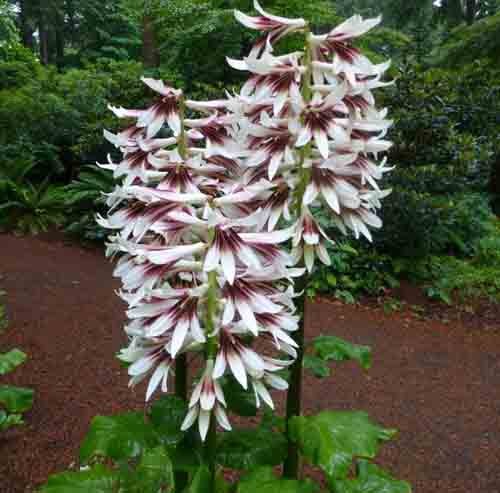
- Yunnan - Variation of a giant cardioirinum, opened in the 90s of the last century, so in domestic and Western catalogs the plant appeared quite recently. It is characterized by large heart-shaped leaves with glossy glitter, which look especially beautiful in the spring, since painted in a burgundy purple tone. In the process of growth, the color is replaced with dark green, and in the middle-end of July, a powerful bloomer is formed on the stem, which has 10-12 snow-white flowers with a length of 20-25 cm. Inside, on the edges and in the center of the petals can be seen purple clips. A distinctive feature of Yunnan Cardiorinum is that huge flowers do not look down, but directed to the sides. The bulb is much smaller than a gigantic variety and reaches 10 cm in diameter.
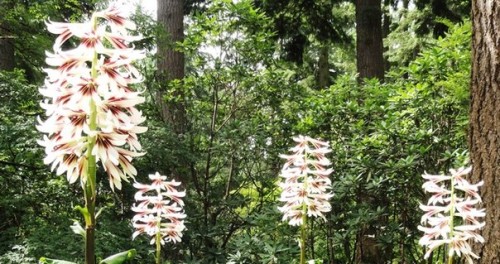
- Cardiocrine Glen - the maximum height is 2 m. The species inherited their name from the discoverer of Peter Glen, who found a flower during the East Siberian Expedition in the 60s of the last century. The plant looks impressive even without blossomed buds. The high powerful stem crowds a huge luxury sputcher of bright bronze color, which, as the disclosure, it is painted in an olive green tone with reddish streaks, and it darkens even stronger by the summer. At the end of July, large white-green flowers are blooming, exacerating a pleasant fragrance. Cardiocrine Glen loves high humidity, nutritious and well-drained soil.
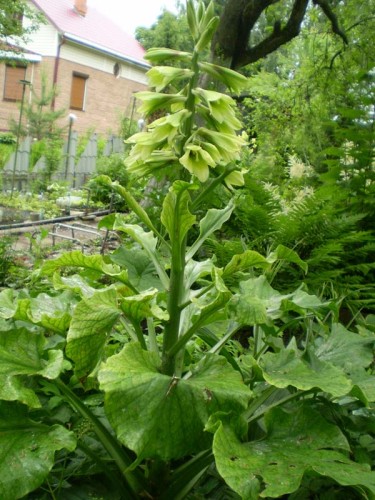
Growing a lilac tree
Half success when planting a lilac tree lies in a properly selected place. The site should be protected from drafts, it is good to warm up, but not stand under the right sunlight, otherwise the plant is overwhelmed and burn. High humidity level is a prerequisite for intensive growth and lush flowering. The root system and the lower outlet of the leaves must be hidden in high grass, stems and foliage of adjacent plants. If you live in southern areas with a dry climate, choose areas in the garden lit by the Sun 4-5 hours in the morning.
During the growing season, it is very important to maintain the moderate moisture content of the soil, but the excess can lead to the death of the bulbs, so you should not plant lily trees in places with shallow groundwater. The soil must be fertile and well-drained so that the water is not stored and did not provoke the posting. The optimal option will be a ground-based ground-based or turf with a slight addition of clay and compost.
How to plant livet tree bulbs:
- Prepare the landing pits with a depth of 50 cm and the same diameter.
- On the bottom, put a large river sand, rubble or broken brick layer 20 cm to ensure good drainage.
- Put a drainage cushion of garden earth, mixed with a compost or humus and leave for a week so that it is on your own donkey and stuck.
- Plant the bulbs around the fall - at the end of September or the first days of October. It does not apply to the general rule of landing of bulbous cultures, which says that it is necessary to plunge the bulb on 2/3 of its heights. In the case of cardiocinum, it is enough only to sprinkle a bulb in the soil, so that its spring is slightly above the ground level.
- Space the bulbs at a distance of at least meter, otherwise adult plants will fight for moisture and light and will not be able to flour full.
- When the first frosts occur, cover the landing of mulch from false foliage or needles. Such plants are ideal for air-dry shelter, and the more snow will be, the more comfortable it will be wintering.
- In the spring, when the first deciduous sockets appear, they need to shade them from the sun and protect against early frosts.
Despite the seeming capriciousness, gigantic lilies are very effective plants. They look great both by themselves and in a complex with other cultures, complement the mixtures and get along well with perennial herbaceous plants.
As it was already possible to understand from the foregoing information, the lilac trees multiply can be seed and a vegetative way. In the fall, subsidiaries should immediately separate from the maternal, otherwise they will not survive the winter. In the spring they are searched at 70-100 cm from each other, and the cycle is repeated. Seed reproduction takes more time, but will allow a large amount of high-quality planting material. In the fall, after the end of the flowering period on the tops of the stems, you can see small cylindrical boxes with seeds. If cold has come, but the boxes have not yet been dosed, they must be carefully cut off with a knife with a small segment of the stem and put in a dry warm place to maturation. If autumn turned out to be warm, the seeds can be watched on the stem.
Important moment: Seeds quickly lose their germination, so they are recommended to suck them immediately after ripening. If they store them in the warm room, the germination will be lossed for the next year, if in cold - in 5-6 years.
The most effective way of reproduction is to evaway just collected seeds in late autumn. Seedlings of lily trees grow rather troublesome and difficult for beginners, since the seeds need to be stratified. To do this, it is necessary to hold them at temperatures up + 5c, then - to + 20 ° C, then placed again in the cold. And even after all these procedures, they will only go to the second year. Not any such time-consuming work, and therefore it is recommended to simply immediately sink seeds in the garden.
Lily tree care
Caring for lily trees will not bring problems if they immediately provide enough moisture and light. The only one, during flowering, the plant should be given more attention to it can reveal all its potential.
Here are some simple rules, observing which you can grow a beautiful lily tree in your garden:
- If the summer was dry, abundantly water the plants twice a week, if the weather is moderately hot - once a week.
- In the spring and before flowering, bring mineral and organic fertilizers or simply add growth stimulant into water.
- The highest stems on which a large number of buds have been formed, tie to the support, otherwise they can break or glance under the severity of flowers or because of the wind gust.
- Before frosts, be sure to cover the cut stems of the loose trees dry mulch.
- Some gardeners are not cut off trunks, others do it so that it is more convenient to cover plants for the winter.
Lily tree is a completely special plant that instantly cares all attention. With regular and not too burdensome care, it will delight you, though rare (every 3-4 years), but incredibly beautiful bloom.
Useful advice: Place a few lily trees of different ages, so that blooming occurred consistently and decorate the garden every year.



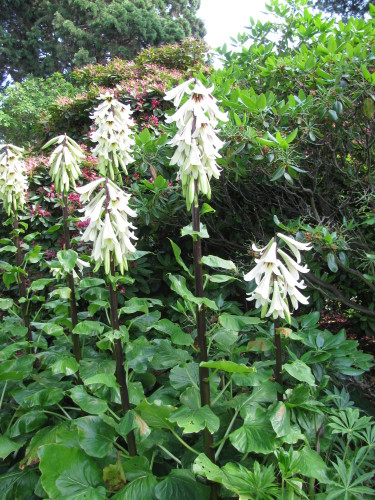
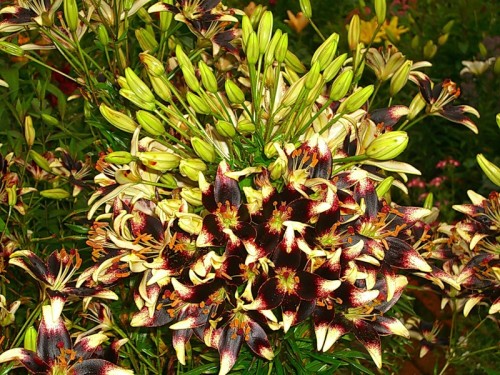

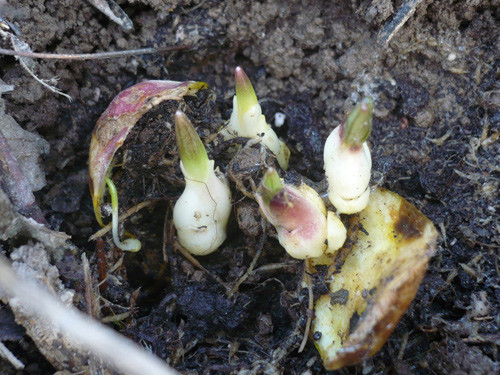
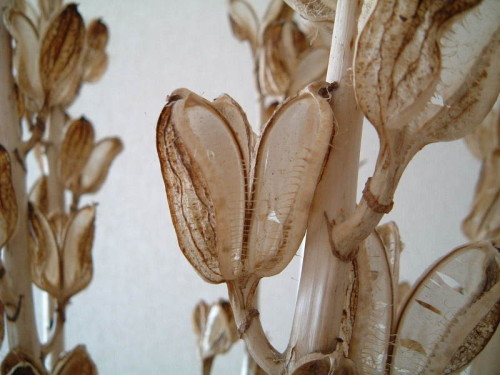
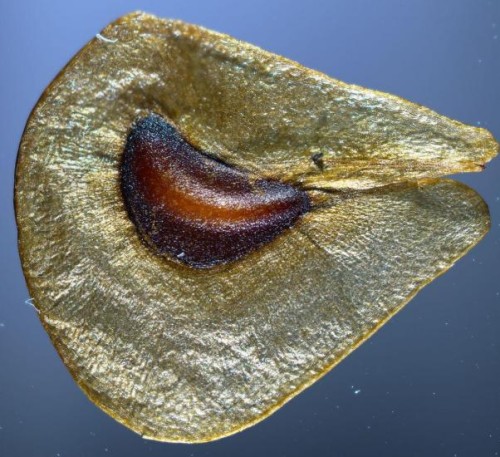
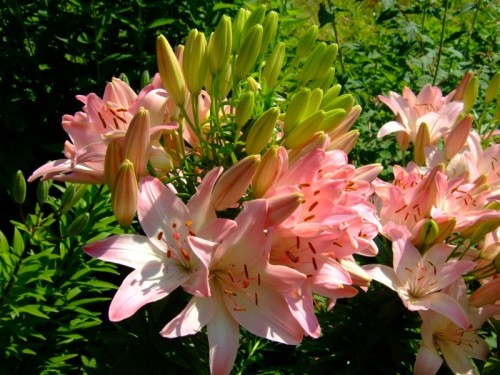
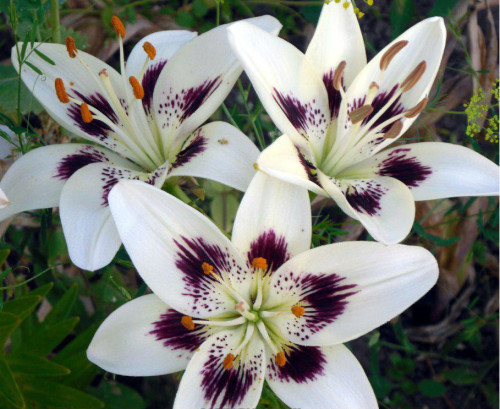
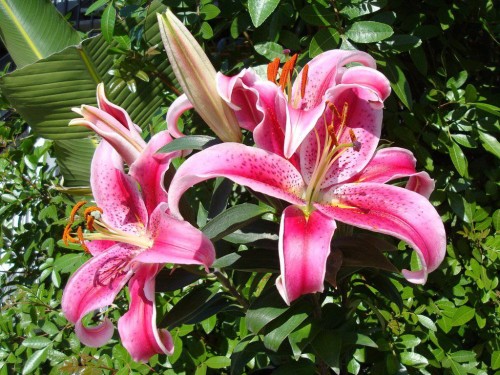
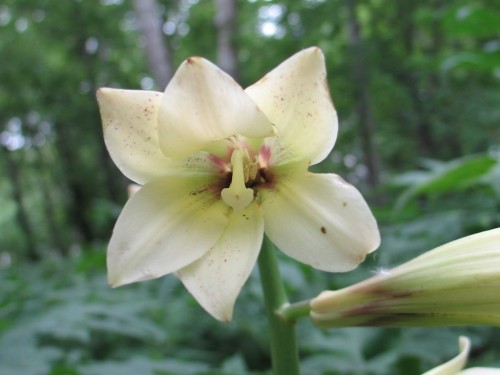
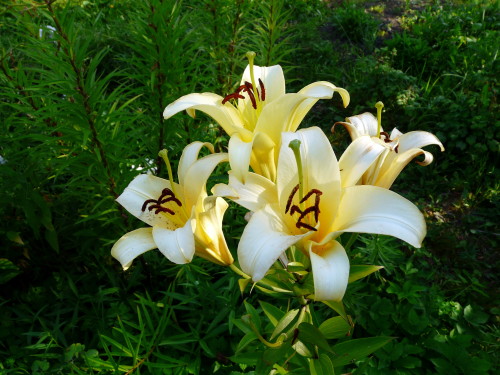
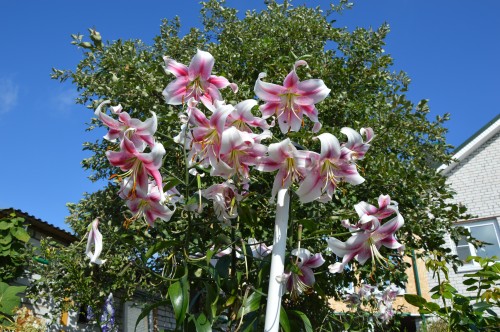
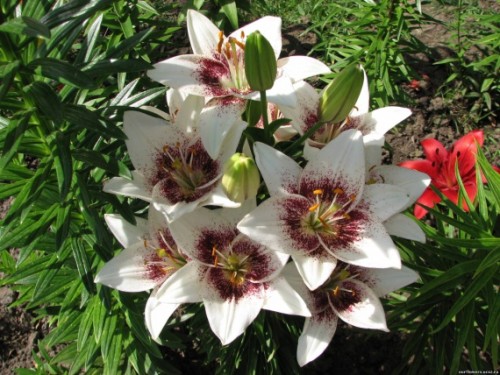














 Start a discussion ...
Start a discussion ...